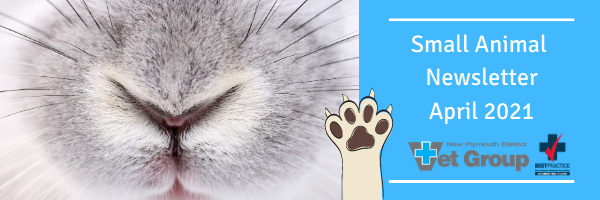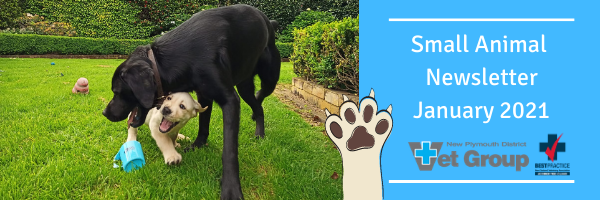We now offer Low Level Laser Therapy (LLLT also known as Photobiomodulation) Recently, we started offering…

Small Animal Newsletter March 2020
Parasite Control (Worms and Fleas!)
Internal and external parasites are a very real threat for both pets and their two-legged family. It’s not uncommon for cats and dogs to become infected by parasites at some point in their life. The effects of these parasites on your pets can vary greatly in severity – from a simple irritation, through to a life-threatening condition if left untreated.
External parasites include blood-sucking fleas, ticks and mites that live on the pet’s skin or in their ears. Internal parasites number intestinal worms of different varieties: roundworm, tapeworm, hookworm and whipworm. These live in the bloodstream, heart and lungs of infected pets, and can cause serious debilitation or death.
Parasites that can affect pets:
- Coccidia
- Giardia
- Mange Mites
- Ticks
- Ear Mites
- Roundworms
- Toxoplasmosis
- Fleas
- Hookworms
- Tapeworms
- Whipworms
Treatment and risk management
Year-round parasite prevention is important as different types can strike during different seasons. Zoonotic parasites can be transmitted to humans directly or through environmental exposure. To protect both your pets and your family it’s important to practice good personal hygiene and clean up your pet’s faeces regularly. A year-round parasite control program for your pets is essential, so speak to one of our vet team today about different treatment options available.
Covid-19
If you are seeking updates regarding coronavirus and pets you can visit the World Small Animal Veterinary Association WSAVA website here.
Alternatively, you can follow the New Zealand Veterinary Association Facebook page here.
Compost – dangerous to your dog
What happens if my dog eats Compost? Is it dangerous?
The answer is yes!
Composting is an environmentally friendly way of recy
Dogs are attracted to the smell of compost and if you’re not careful, your dog may ingest the material and become extremely sick. Not only does the material provide a choking hazard with bones and other large material, but there are also dangerous toxins in compost that can cause severe illness.
Decaying food material contains many types of mould and the mould spores produce mycotoxins. Therefore, consuming mould will cause mycotoxin ingestion and your pet will show signs of tremors and imbalance. Other notable signs could include vomiting/diarrhoea, fever and excitability. These symptoms can last for many days if not treated.
Diagnosis is based on clinical exam findings and owner history. There are no practical tests for compost and mycotoxin ingestion, so you need to rely on an veterinarian to make the diagnosis. Once properly diagnosed, your veterinarian can start implementing the necessary treatments and therapies.
Treatment should be implemented ASAP. Veterinarians will induce vomiting if ingestion has occurred a short time ago and there is no vomiting as a symptom. In addition, activated charcoal should be administered to help bind and absorb the toxins within the gastrointestinal system. Intravenous fluids are also beneficial to support the body and prevent dehydration.
Fortunately, prevention is easy. Make sure you keep a closed, air tight bin for your kitchen compost and make it out of reach from your pets. If you have a backyard compost bin, be very careful to prevent access to your pets and always supervise your pets while they are around. If you do happen to see your dog eat compost, call your veterinarian right away for advice — do not wait for symptoms to show. Also, we advise not to put bones, corn cobs, nectarine and avocado stones into your compost as we regularly have to remove these items surgically from dog’s intestines.
Reference: https://www.kingsdale.com/blog/view.php?permalink=compost-dangers-and-toxicity-in-dogs
Bone Broth
Bone broth can be used in many ways, but most importantly to hydrate & nourish ill animals, 
There is no single recipe for bone broth. The two things all recipes have in common:
- The addition of an acidic liquid. This helps draw the minerals out of the bones more thoroughly. Raw Apple Cider Vinegar is most commonly used, and it’s well regarded by herbalists for its ability to draw minerals out of plants. Lemon juice may be substituted.
- Long Cooking Time. This is necessary to get the full nutrition out of the bones. There is no magic time, with some only cooking 2-3 hours and others choosing to cook for a full 24 hours. A slow cooker can be helpful but a well-monitored large pot on the stove works too.
- Start with raw and/or cooked bones.
Be sure to include joint bones with cartilage if you’re after collagen and other joint care nutrients. Choose any free-range, grass-fed or wild carcasses. Chicken frames are good. You can collect and save bones from your own meals in the freezer but be sure to rinse any sauce off that may be irritating to your dog’s digestive system. If you are planning to use it as more of a meal (for those whose gut is healthy) or want plenty of meat included use a whole chicken, turkey leg quarters, or other meaty bones. You can also add meat from another species (use poultry bones with beef chunks, for example). - Completely cover the bones with water & add vinegar.
Cover with an inch or two of water, but not too much more, in order to keep the broth dense. Add raw apple cider vinegar, 2 tablespoons for a large pot. Put the lid on (and keep it on for the duration) and set your slow cooker to low, or pot to simmer. Remove the scum layer as if forms. - When finished:
Pour through a strainer, discard the bones (do not feed these to your dog!) and put the meat and soft tissue back in. If it has a jelly-like consistency when it’s chilled that’s a good thing. Cool and leave the hard layer of fat in place until the broth is eaten (feed the fat layer unless your dog suffers pancreatitis). - Storing:
You can freeze this broth in small containers for easy dispensing or store it in your refrigerator for about 3 days. - Start Slow:
If they’ve never eaten collagen rich food before their stools may be a bit loose initially.
Further information:
Information provided by Dr. Lyn Thomson at www.rawessentials.co.nz. and from http://feline-nutrition.org/health/feline-inflammatory-bowel-disease-nature-and-treatment. Bone broth recipe from ‘The Art of Dog’ Helping Dogs Heal Themselves Holistically,Margaret Nee, http://www.theartofdog.com/
This information was provided by our veterinarian Dr Wendy Dixon. She is passionate about offering both conventional and holistic veterinary practices. She also takes referrals for both acupuncture and homoeopathy. You can book an appointment with her here at the Vet Group or our other clinic St Aubyn Vets.
This article can be found on our website – https://www.npvet.co.nz/pets/animal-info-pets/natural-medicine-articles/make-bone-broth/
BITSA – Breed Identification
Do you have a mixed breed dog? Have you ever wondered what combination of breeds they are?
Now you can find out with the BITSA breed identification test.
BITSA is a non-invasive DNA test that retrieves a dog’s true breed history using leading-edge breed enhanced DNA analysis to provide an accurate report of a dog’s breed make up. Knowing a dog’s breed history can help treat behavioural issues more effectively and allow you to understand your dog better.
To be able to run the test we need to take a saliva swab from your dog which is then sent to the lab. The test results can take 4 – 6 weeks to come back.
Last year one of our Vet Nurses Tayla was interested to find out the breed history of her dog Brax (pictured above). The results were really interesting and indicated that his Great Grandparents and Grandparents on one side where from American Staffy Terrier decent and on the other side they were from a mixture of American Staffy Terrier, Labrador and Mixed breed.
Refering to his personal chart below, the mixed breed analysis indicates that Brax also has DNA from Shetland Sheepdog, Australian Koolie, Chesapeake Bay Retriever, Bull Terrier and Ibizan Hound.
If you would like to know more about BITSA testing, give us a call or book an appointment with one of our vets. Pricing varies depending on which tests you would like performed.
Staff Showcase: Veterinarian Anne Terrill

Given a few minutes to herself, Anne can be found with a cup of tea in one hand and a book in the other. Most of the time though, she’s out exploring local beaches, parks and cafes with her husband and two children.
Our Instagram Superstar
Meet Maple and Mochi! Enjoying a munch crunch while visiting the clinic.

Have you checked out our Instagram page yet? Updated daily – Meet our pet visitors and patients! Click here!
Disclaimer: This newsletter contains comments of a general nature only and is not intended to be a substitute for professional veterinary advice.








